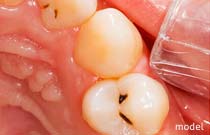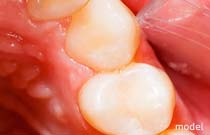Visit Our Office 77 Rolling Oaks Dr., Thousand Oaks, CA 91361(805) 379-5262
Restoring a Missing Tooth
Sometimes missing one tooth may not seem like a really big deal as after all you probably have 27 more even if you had your wisdom teeth extracted when you were younger. In many situations that is not the case as one missing tooth can have detrimental effects on the remaining teeth in close proximity.
Refer to the diagram below:
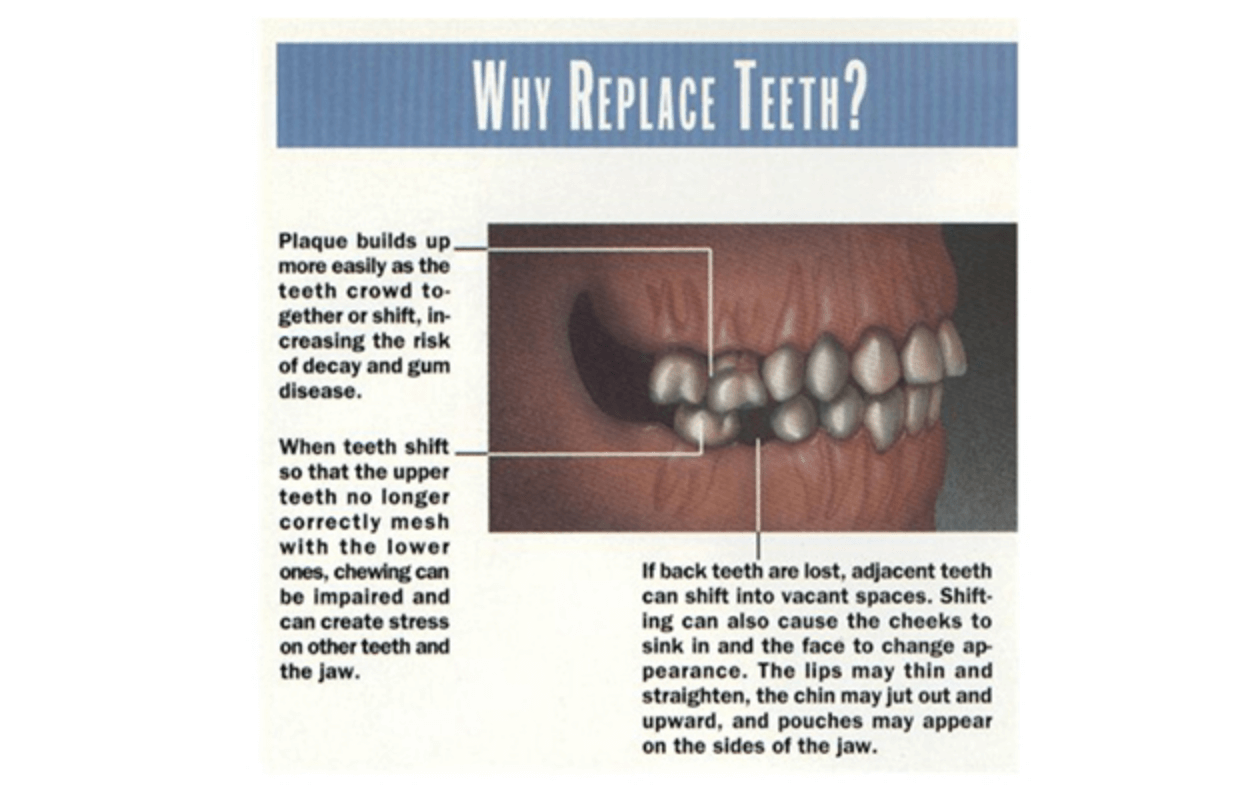
As you can see the extraction of one molar without replacement has resulted in the back tooth tilting forward, the back tooth is tilting backward and the tooth above the extraction drifting down. This process does not occur overnight but it is a slow process than can after a while effect your bite and teeth orientation in that area.
Your Options for Replacing Missing Teeth
You will have multiple options to replace the missing tooth. Each has advantages and disadvantages and Dr. Sharon can explain the advantages of each of the following to your particular circumstance.
Option 1: Implant
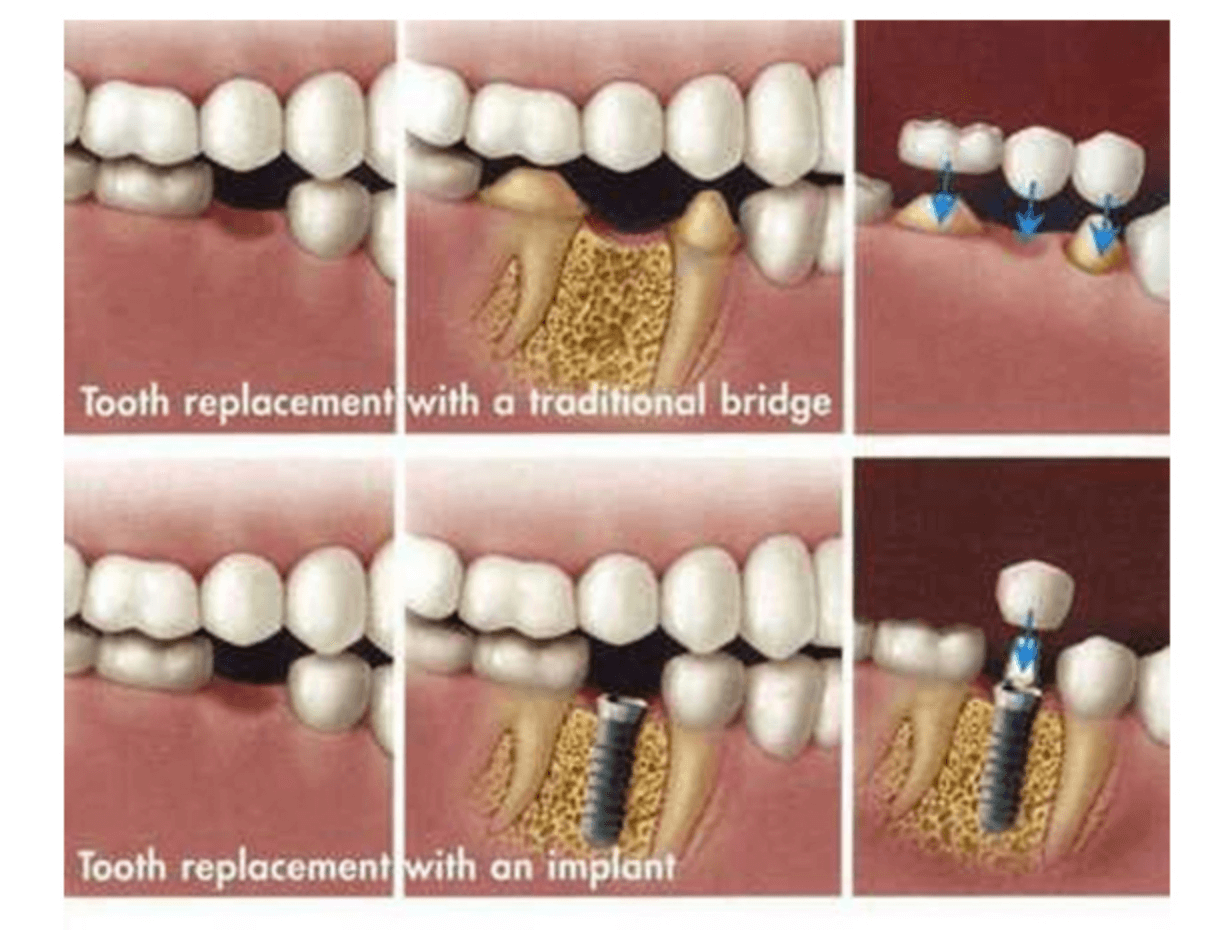
[blockquote]
With implants, there’s no need to grind down healthy adjacent teeth. The implant acts as a root to help prevent bone deterioration and delivers long lasting function and beauty.
[blockquote]
Traditional bridges will eventually lead to bone loss under the unsupported tooth. This can result in an unattractive dark space at the gumline.
The advantages of an implant are that the tooth replaced is not dependent on the adjacent teeth. There is also no need to shave down the adjacent teeth, and if you lose one of adjacent teeth it will not compromise the implant. That is not the case with bridge and denture, as they both require support from the adjacent teeth for support. An implant does require adequate bone for support of the implant and in most cases there will be a 4-6 month waiting period prior to placing the implant crown.
Option 2: Bridge
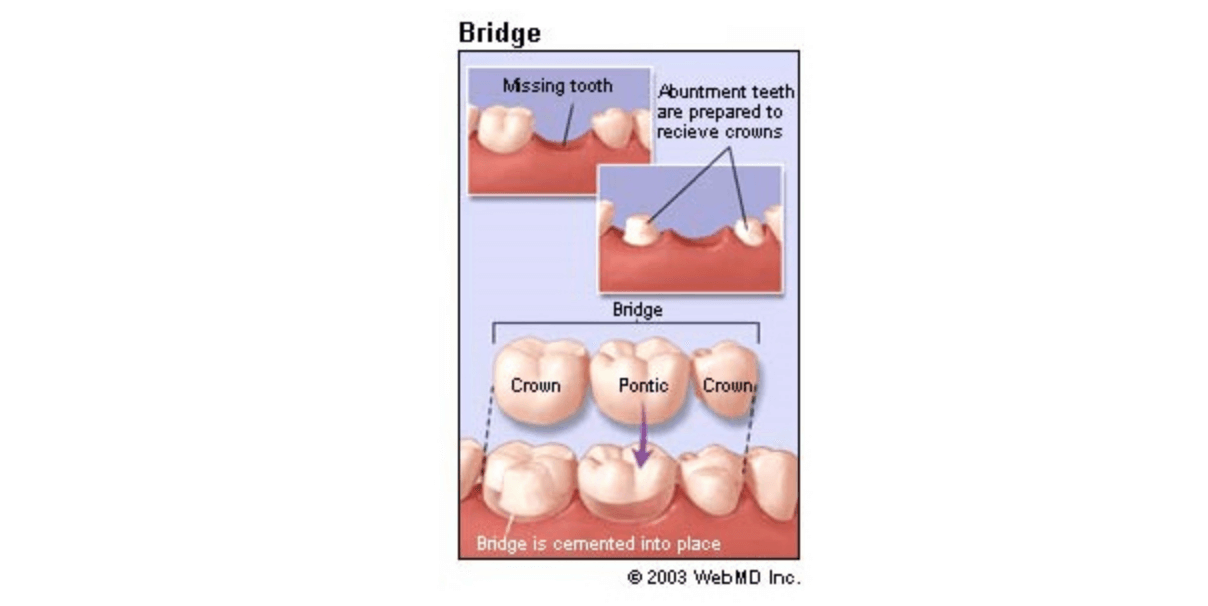
The support the missing teeth are the teeth that are adjacent to the space. Those teeth will minimally shaved down and crowned and thus help support missing tooth in between. As you don’t want to put too much pressure on the supporting (abutment) teeth, it is important for these teeth to be strong and that the edentulous space not be too long.
Many patients will have a choice of getting a bridge or an implant to replace their missing teeth. Each procedure has their pros and cons. The advantage of a bridge is that it can be done in a minimal number of appointments and if adjacent teeth have large restorations they may benefit from having a crown placed on them.
Areas that may not be ideal for implant and placement such as tilted teeth or small spaces can be corrected with the bridge. The two major drawbacks of a bridge are that the teeth making up the bridge are interconnected and a problem with any of the abutment teeth making up the bridge will compromise the entire bridge. Furthermore, you will need a special type of floss called “floss threaded” to get underneath and clean underneath the bridge as this can be an area of plaque build-up.
At Sweet Tooth Dental Center we specialize in Dental Implants. To find out more about how Dr. Sharon Shamoiel can help – contact us and schedule a consultation.


